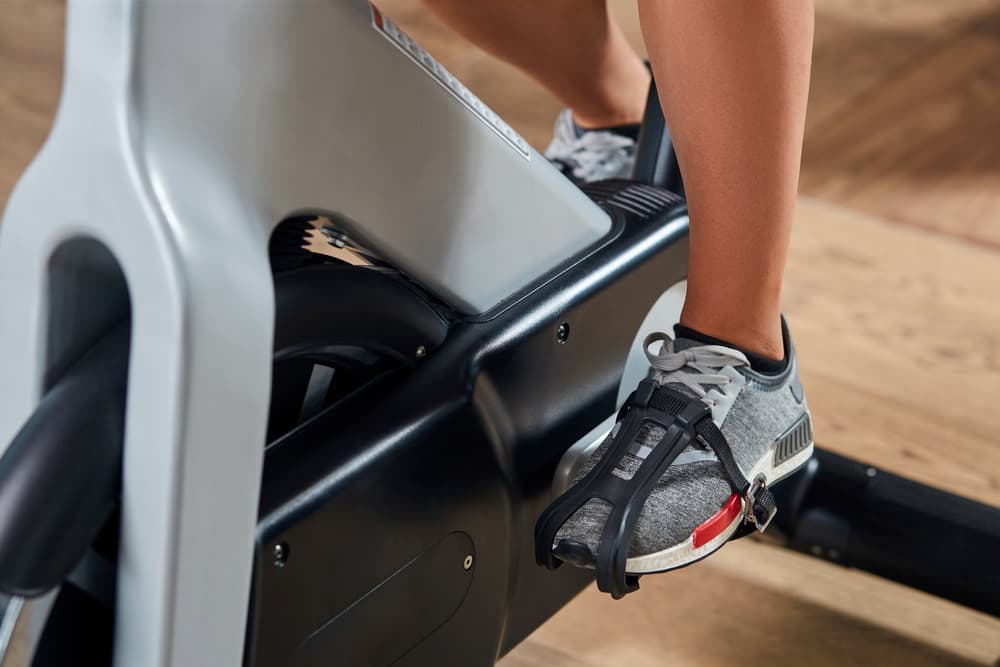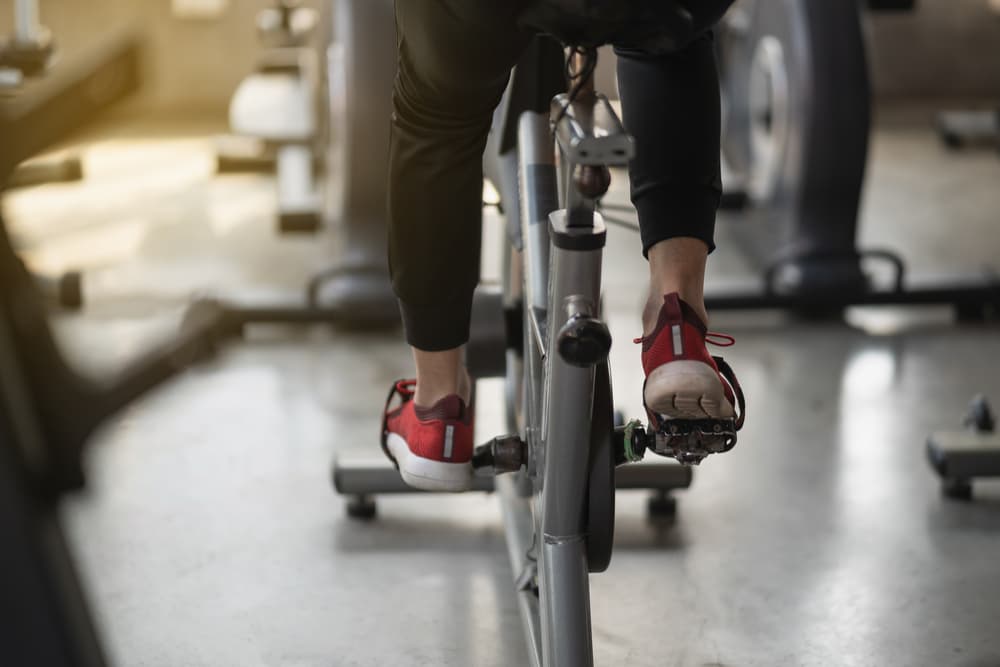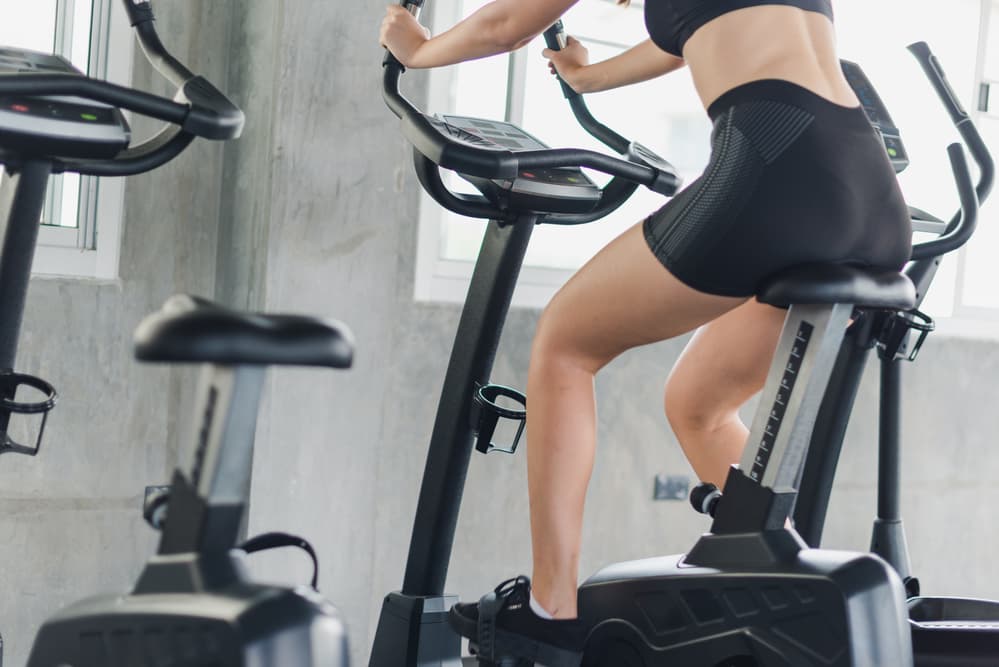Most of us choose fitness equipment based on features we see – construction, console, etc. However, how a machine works or its mechanical design is also as important. One example is the fixed and freewheeling pedal systems of exercise bikes.
Some may think all bike pedals work the same way and that their make has little to zero effect on their cycling workouts.
But it turns out that choosing between fixed and freewheel pedals should match your fitness goals and capacity.
Specifically, fixed-gear pedals are best for experienced riders training for better resistance control and cadence. On the other hand, freewheeling pedals suit beginners who prefer effective but less strenuous cycling workouts.
Let’s analyse these pedal systems more to understand why they work for specific individuals.
More importantly, identifying their differences should help you decide which pedal type suits you.
Fixed vs Freewheeling Pedals in Exercise Bikes
To understand how these pedal systems affect our workouts, we need to know how they work first.
Fixed systems are pedals directly connected to the flywheel of your exercise bike.
This connection generates ride inertia, meaning the pedals continue to spin even if you stop pedalling.
This pedal type is the most common design in exercise bikes.
Freewheel systems are also available in indoor bicycles. But they are more common in outdoor bikes.
It’s because these pedals allow cyclists to “coast”. Coasting on an outdoor bike allows the back wheel to spin without your legs stepping on the pedals.
But in exercise bikes, a freewheeling system allows the rider to stop the pedals from spinning uncontrollably.
Once your legs stop pedalling, the pedals also come to a stop.
So, to sum up, fixed pedals continue to spin even after you stop pedalling. Freewheeling pedals allow you to pause pedalling at any time.

Pros and Cons of Fixed Pedals in Exercise Bikes
We now know how fixed pedals on exercise bikes work.
The next question is, are they better than the freewheel mechanism? And what are the downsides of fixed pedals?
Fixed pedals are excellent if you prefer intense cycling workouts. Remember that fixed pedals keep spinning even if you stop or reduce your pedalling speed.
That means your legs should be constantly moving when riding a fixie bike. If your leg muscles work a lot, you also burn more calories.
Also, it takes considerable effort to bring constantly spinning pedals to a halt. The more leg power you put in, the more difficult it is to stop the pedals from turning.
But while challenging, this also helps improve your resistance control and cadence.
Using a fixed-gear bike is not always good, though.
When incorrectly used, a person might get tempted to lessen his leg power and make the moving pedals do the work for him.
This tactic may boost your heart rate and make you sweat still, but it’s not an efficient workout session.
To overcome this problem, you should monitor your performance with a power meter.
Another disadvantage of fixed pedals is it takes practice to use them safely.
Because if you are not careful, the spinning pedals can hit your legs once you stop pedalling and get off the bike.
Untrained riders may also try to keep up with the fast-spinning pedals, causing unnecessary strain on their knees.
| PROS | CONS |
| Ideal for intense cycling sessions | Takes some getting used to |
| Builds good aerobic fitness | Requires actual power output monitoring |
| Improves your control and cadence | May cause leg or knee injuries |
Pros and Cons of Freewheeling Pedals in Exercise Bikes
Exercise bikes with fixed systems can be challenging to use at first. Without ample practice, the constant spinning pedals might bruise your legs, too.
You will not encounter these issues with freewheeling pedals, though.
Since this type does not move without leg power input, the pedals cannot spin uncontrollably and hurt you.
Your riding experience with freewheeling pedals will feel smoother and more natural.
Also, you can instantly change your cadence and let your legs recover a bit mid-workout when necessary.
It’s an excellent feature, especially if you like long cycling sessions.
But like fixed pedals, freewheeling types have disadvantages, too. As they are simple to use, freewheel pedals can make workouts easy.
Pedalling a freewheel exercise bike is not as tricky as fixed bikes, so the physical effort is less.
The less effort you put in, the less powerful your cycling performance will be.
Freewheel pedals are good for newbies trying to improve their indoor cycling technique.
But once they get past the beginner stage, they may need to replace their equipment with fixed pedals for better workout results.
Upgrading your equipment is not a bad thing, but it adds to your expenses.
| PROS | CONS |
| Ideal for long cycling sessions | Makes workouts easy and less efficient |
| Protects you from leg strain or injury | Not for those who want to be fit quickly |
| Gives a more natural riding experience | May lead to extra expenses later |

Fixed or Freewheeling Pedals: Which is Best for You?
Like other aspects of an exercise bike, the choice between fixed and freewheeling pedals depends on your fitness level and needs. Here’s what I suggest.
Exercise bikes with fixed pedals are best for:
- Experienced riders who enjoy intense cycling workouts like HIIT or zone-based cycling
- Intermediate cyclists who want to improve their cycling abilities
- People who train every day and regularly do indoor cycling sessions
- Fitness enthusiasts who want to boost their leg muscle strength
- Advanced users with ample leg power and control
- People who prefer to invest in exercise machines they can use for a long time
Exercise bikes with freewheeling pedals are best for:
- Indoors cycling beginners who want to learn and master the basics
- Riders who have yet to build up leg control and strength
- People hopping back on the exercise bike after a hiatus
- Senior cyclists who prefer easy but still effective workouts
- Casual users who love longer rides or use indoor cycling as a supplement exercise
- People who are willing to spend for a new exercise bike with fixed pedals and higher resistance
Conclusion
So, are fixed better than freewheeling pedals in exercise bikes? Based on our comparison, there is no clear winner between the two.
Both have pros and cons, and each has a specific purpose. But if you ask me, I’d say the fixed pedal type is a more practical option.
While it is challenging to use at first, the goal in any exercise is to practice and progress, after all.
And I think a fixed-gear bike is the perfect equipment to push you to the limits and help you become a better cyclist.
To ensure you choose the right exercise bike, I suggest you test a few models and get a feel of different pedal types.
Go for a bike you feel and think can help you achieve your fitness goals.

Related Questions
1. Which exercise bike pedal design is best for my cycling workout?
The exercise bike pedal design that matches your fitness level and workout needs is the best for you. Go for a flat pedal if you’re a beginner or a toe cage type for secure intermediate-level cycling. Then, shift to clipless or hybrid pedals once you start on more challenging stationary bike workouts.
2. Are exercise bikes with manual resistance adjustment better than electronic ones?
Manual resistance relies on friction, while electronic ones depend on a power source. Using either gives a different cycling workout experience. For instance, exercise bikes with manual resistance simulate road cycling but can be noisy and high maintenance. On the other hand, electronic resistance bikes have a higher upfront cost but are ideal for more variable and quieter rides.
- What Are the Advantages and Disadvantages of Folding Treadmills? - 11 March 2025
- Can You Use a Massage Gun When Pregnant? - 10 March 2025
- What is the Best Pre-Run Food? - 6 March 2025
